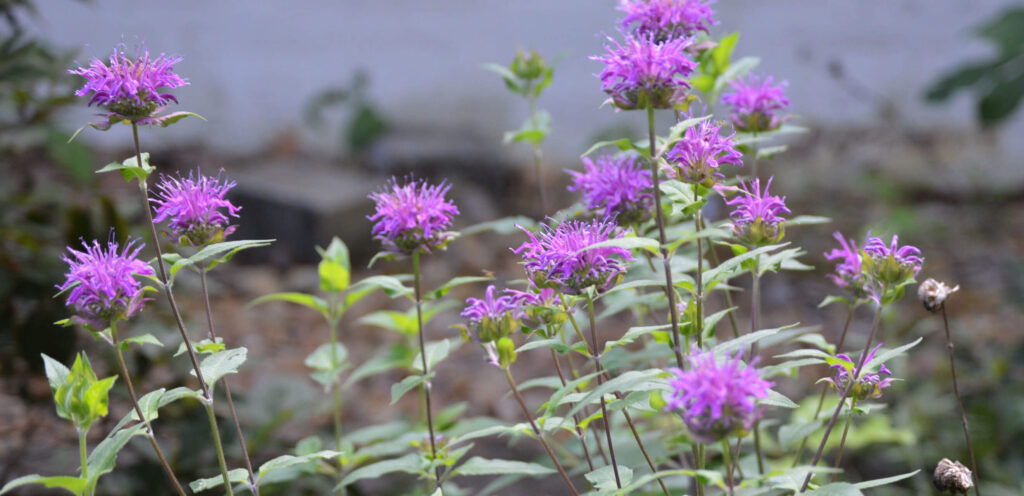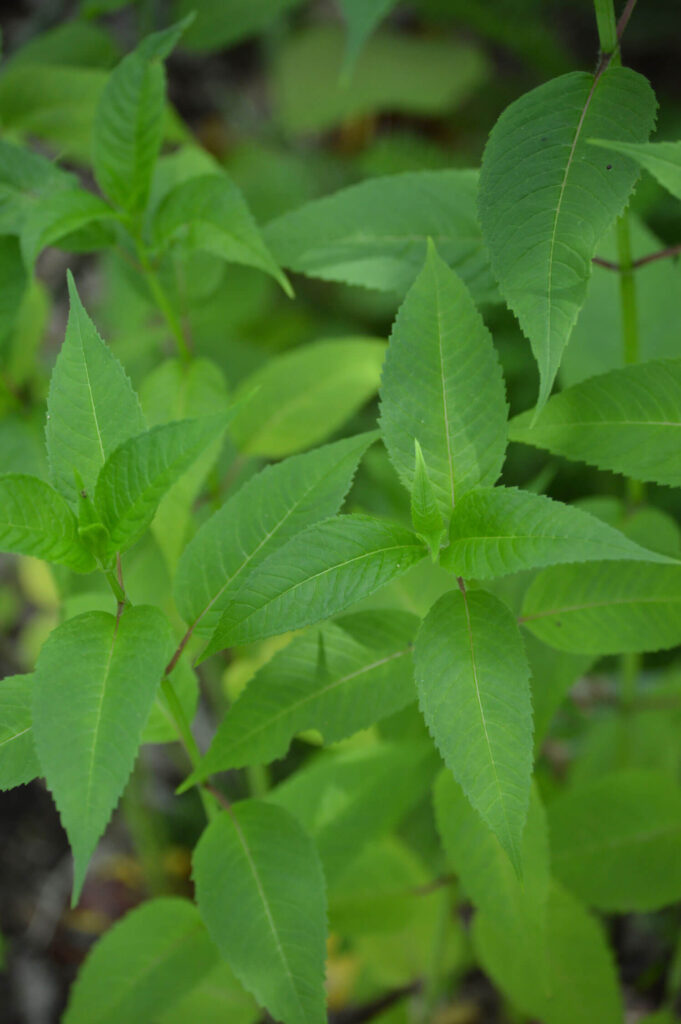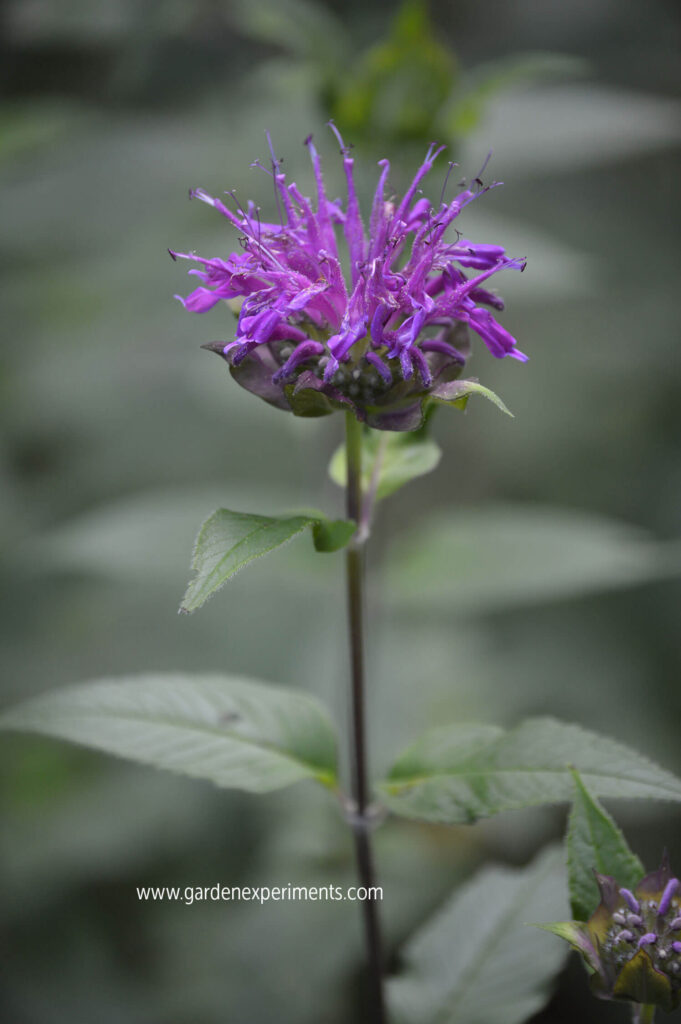If you’re looking for a native, perennial plant to add to your garden that will be easy to care for, add great color to your garden, and attract hummingbirds, bees, and butterflies, bee balm (Monarda sp.) is a good choice.

Bee balm is in the mint family; its leaves are aromatic and both leaves and flowers can be made into a tea. There are several varieties producing flowers in white, red, purple, and pink. It may grow as tall as four feet, but you can pinch the tips of the plant in early spring to encourage a more bushier growth form. This plant is hardy in zones 4-9.
Wildlife Value
Hummingbirds, butterflies, and bees feed on the nectar of this flower. According to the Lady Bird Johnson Wildflower Center, Monarda has a special value to native bees. It is deer-resistant.
How to Grow Bee Balm
Since this is a native plant (native to North American prairies), it is low maintenance once it is established. It can be grown in full sun to partial shade (the part shade is sometimes better in the hotter afternoons of the southeastern U.S.).
Soil should be well-drained, but relatively evenly moist, though this plant can tolerate drought. Some varieties can handle wetter soil better than others. Bee balm will also grow well in clay soil – those growing in my garden are living proof of that.
Blooms occur in early to late summer. You can remove spent blooms to encourage a longer blooming period.
Since this plant spreads well, you should dig it up and divide it every couple of years to keep it in check. In really good growing conditions, it may take over a garden.
How to Propagate Bee Balm
You really can’t go wrong with bee balm. Propagate bee balm by planting seeds, taking cuttings of the green, soft stems, or dividing the plant (which should be done every few years anyway).
Powdery Mildew is a Problem
This plant is susceptible to powdery mildew. Do what you can to encourage good air movement at the base of the plant by removing mulch around it and thinning out the middle a bit.
Also, water the plant from the base (at the ground level) instead of watering from the top. Some varieties are mildew-resistant.
If powdery mildew does show up on your plant, trim back any infected branches close to the base of the plant.



